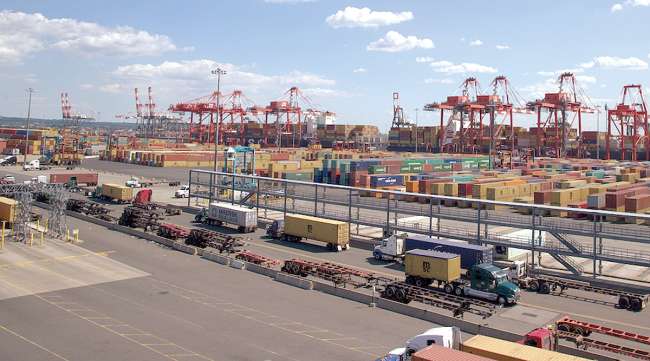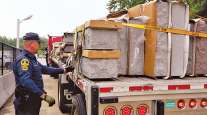Staff Reporter
FMCSA Proposes Revised Guidance on Yard Moves

[Stay on top of transportation news: Get TTNews in your inbox.]
The Federal Motor Carrier Safety Administration is proposing to revise regulatory guidance related to how truck drivers record yard moves as part of their hours of service.
According to a notice published in the Federal Register on Jan. 4, FMCSA proposes to clarify when a driver may record time completing yard moves as “on-duty, not driving” time by offering examples of properties that qualify as yards. Movements of commercial motor vehicles that occur on these properties would be considered yard moves and recorded as on-duty, not driving status, rather than driving time. FMCSA’s guidance pertains to all truck operators who are required to record HOS.
“This guidance, if finalized, lacks the force and effect of law and is not meant to bind the public in any way,” the Federal Register document states. “This guidance document is intended only to provide clarity to the public regarding the agency’s interpretation of its existing regulations.”
Proposed Regulatory Guidance Concerning the Use of a CMV for Yard Moves by Transport Topics on Scribd
Drivers required to document HOS under the Federal Motor Carrier Safety Regulations have four duty status options to choose from: sleeper berth, off-duty, driving and on-duty, not driving. Drivers must document their time on records of duty status regardless of whether they are using paper logs or electronic logging devices.
Specifically, the proposed guidance states examples of properties that may qualify as yards include (but are not limited to):
- An intermodal yard or port facility.
- A motor carrier’s place of business.
- A shipper’s privately owned parking lot.
- A public road, but only if and while public access to the road is limited through traffic control measures such as lights, gates, flaggers or other methods. For instance, if a driver needs to use a public road briefly to reach different parts of a private property, the movement may be considered a yard move if public access is limited during the move.
Properties that do not qualify as yards include (but are not limited to):
- A public road without traffic control measures.
- Public rest areas.
FMCSA has requested public comments on the proposal, which are due to the agency by Feb. 3. According to the document, FMCSA will consider comments to determine whether any further clarification of these regulatory provisions is necessary.

In this year in review episode, we discuss COVID and everything from gas tax to remote work. With the help of our special Transport Topics guests, Seth Clevenger and Eleanor Lamb, we’ll also begin to map a plan for 2021. Hear a snippet, above, and get the full program by going to RoadSigns.TTNews.com.
Besides general comments, the agency also is requesting responses to these questions:
- Would defining “yard moves” in the agency’s regulations provide necessary clarification and therefore benefit carriers and drivers?
- Are there other properties or situations where drivers may be in a yard move status that should be included as examples in this guidance?
- Would adding examples of yard moves be beneficial for this guidance? If so, please provide examples for consideration.
- How should “yard” be defined for the purposes of this guidance?
FMCSA’s final rule on ELDs, published in 2015, did not define yard moves, noting that the term relates broadly to the HOS rules. The final rule provided that ELDs record yard moves as on-duty, not driving time. In a notice issued in 2014, FMCSA stated the intent of the yard move driving category is to capture time when a truck may be in motion but the driver is not necessarily in driving duty status.
Want more news? Listen to today's daily briefing:
Subscribe: Apple Podcasts | Spotify | Amazon Alexa | Google Assistant | More




